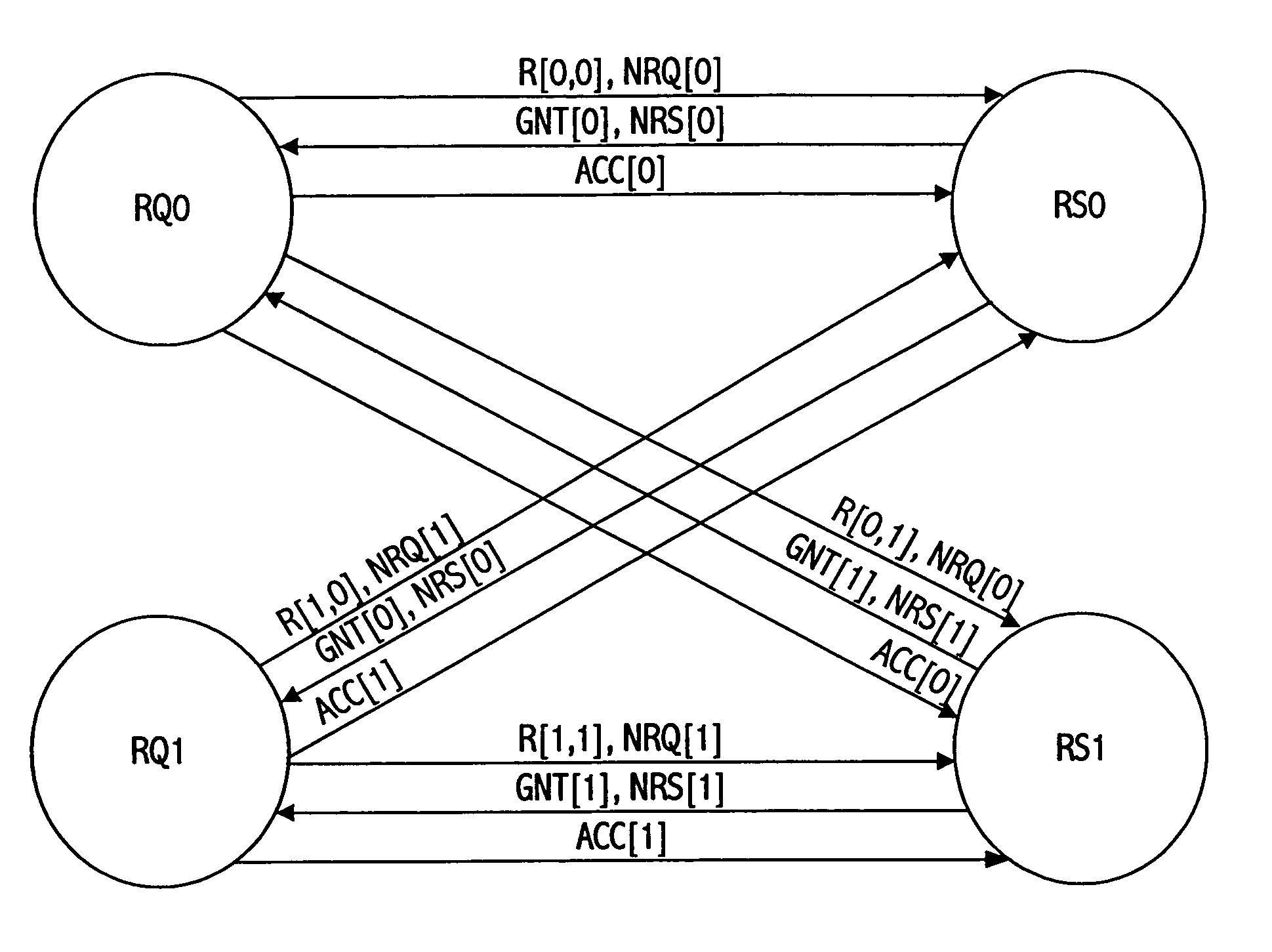Distributed least choice first arbiter
a technology of distributed least-choice and arbiter, applied in the field of shared resources, can solve the problems of the higher aggregate resource usage when compared with other arbitration schemes, and achieve the effects of preventing starvation, increasing the number of granted requests, and increasing the aggregate resource usag
- Summary
- Abstract
- Description
- Claims
- Application Information
AI Technical Summary
Benefits of technology
Problems solved by technology
Method used
Image
Examples
Embodiment Construction
)
[0032]Referring to FIG. 1, one embodiment of the invention is illustrated in which arbiter 101 schedules usage of shared resources, i.e., output ports 103, 105 and 107 among input port requesters, 109, 111 and 113. Crossbar switch 115 forwards packets from its input ports, 109, 111 and 113 to its output ports 103, 105 and 107. Each input port can hold multiple packets destined for different output ports. The switch schedule to be calculated should connect input and output ports in such a way that as many packets as possible can be forwarded simultaneously, thus trying to maximize usage of shared resources. Each requester sends a set of requests to arbiter 101, which then chooses the requests to be granted such that resources are allocated to requesters in a conflict-free way.
[0033]In one embodiment of the invention, the arbiter operates in a synchronous manner in that the arbiter receives request signals 117 for shared resources at the same time from the various nodes 121, 123 and ...
PUM
 Login to View More
Login to View More Abstract
Description
Claims
Application Information
 Login to View More
Login to View More - R&D
- Intellectual Property
- Life Sciences
- Materials
- Tech Scout
- Unparalleled Data Quality
- Higher Quality Content
- 60% Fewer Hallucinations
Browse by: Latest US Patents, China's latest patents, Technical Efficacy Thesaurus, Application Domain, Technology Topic, Popular Technical Reports.
© 2025 PatSnap. All rights reserved.Legal|Privacy policy|Modern Slavery Act Transparency Statement|Sitemap|About US| Contact US: help@patsnap.com



